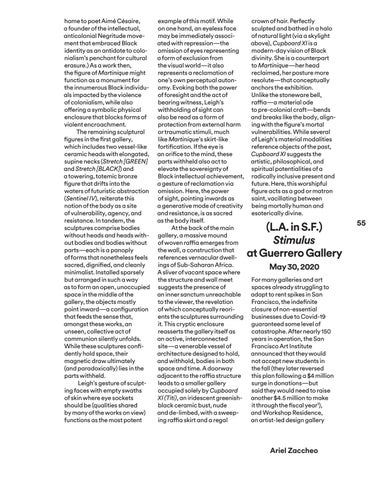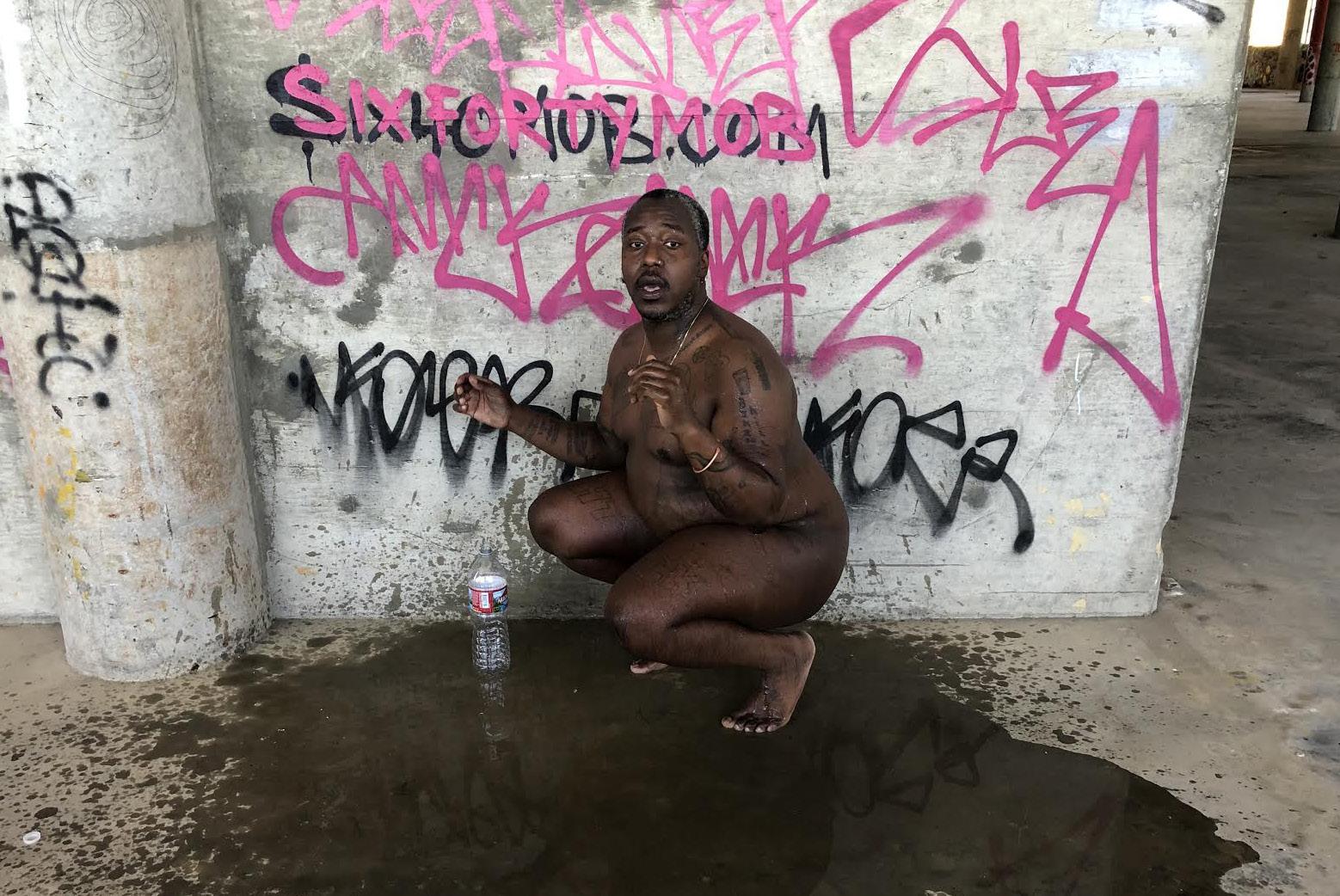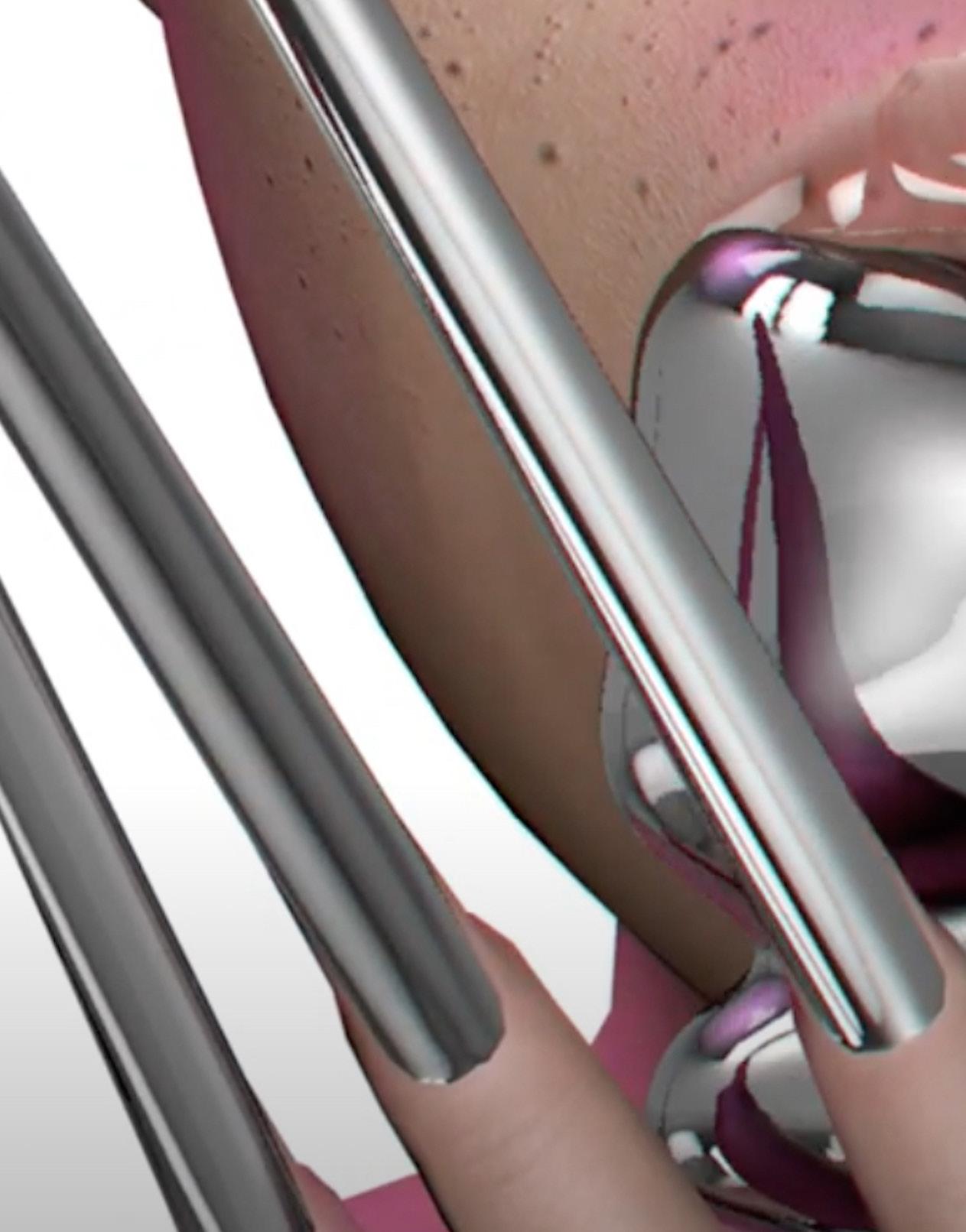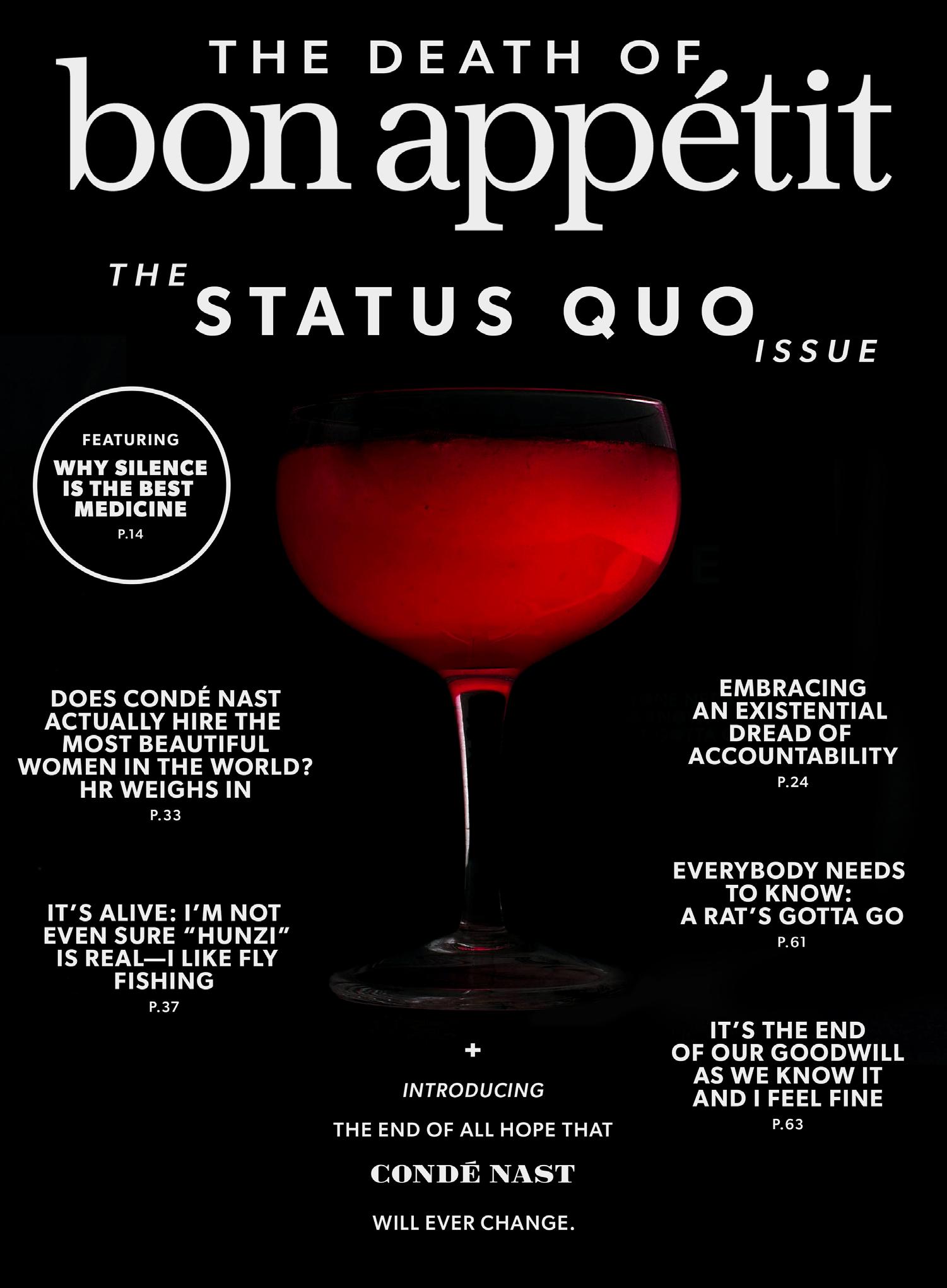home to poet Aimé Césaire, a founder of the intellectual, anticolonial Negritude movement that embraced Black identity as an antidote to colonialism’s penchant for cultural erasure.) As a work then, the figure of Martinique might function as a monument for the innumerous Black individuals impacted by the violence of colonialism, while also offering a symbolic physical enclosure that blocks forms of violent encroachment. The remaining sculptural figures in the first gallery, which includes two vessel-like ceramic heads with elongated, supine necks (Stretch [GREEN] and Stretch [BLACK]) and a towering, totemic bronze figure that drifts into the waters of futuristic abstraction (Sentinel IV), reiterate this notion of the body as a site of vulnerability, agency, and resistance. In tandem, the sculptures comprise bodies without heads and heads without bodies and bodies without parts—each is a panoply of forms that nonetheless feels sacred, dignified, and cleanly minimalist. Installed sparsely but arranged in such a way as to form an open, unoccupied space in the middle of the gallery, the objects mostly point inward—a configuration that feeds the sense that, amongst these works, an unseen, collective act of communion silently unfolds. While these sculptures confidently hold space, their magnetic draw ultimately (and paradoxically) lies in the parts withheld. Leigh’s gesture of sculpting faces with empty swaths of skin where eye sockets should be (qualities shared by many of the works on view) functions as the most potent
example of this motif. While on one hand, an eyeless face may be immediately associated with repression—the omission of eyes representing a form of exclusion from the visual world—it also represents a reclamation of one’s own perceptual autonomy. Evoking both the power of foresight and the act of bearing witness, Leigh’s withholding of sight can also be read as a form of protection from external harm or traumatic stimuli, much like Martinique’s skirt-like fortification. If the eye is an orifice to the mind, these parts withheld also act to elevate the sovereignty of Black intellectual achievement, a gesture of reclamation via omission. Here, the power of sight, pointing inwards as a generative mode of creativity and resistance, is as sacred as the body itself. At the back of the main gallery, a massive mound of woven raffia emerges from the wall, a construction that references vernacular dwellings of Sub-Saharan Africa. A sliver of vacant space where the structure and wall meet suggests the presence of an inner sanctum unreachable to the viewer, the revelation of which conceptually reorients the sculptures surrounding it. This cryptic enclosure reasserts the gallery itself as an active, interconnected site—a venerable vessel of architecture designed to hold, and withhold, bodies in both space and time. A doorway adjacent to the raffia structure leads to a smaller gallery occupied solely by Cupboard XI (Titi), an iridescent greenish- black ceramic bust, nude and de-limbed, with a sweeping raffia skirt and a regal
crown of hair. Perfectly sculpted and bathed in a halo of natural light (via a skylight above), Cupboard XI is a modern-day vision of Black divinity. She is a counterpart to Martinique—her head reclaimed, her posture more resolute—that conceptually anchors the exhibition. Unlike the stoneware bell, raffia—a material ode to pre-colonial craft—bends and breaks like the body, aligning with the figure’s mortal vulnerabilities. While several of Leigh’s material modalities reference objects of the past, Cupboard XI suggests the artistic, philosophical, and spiritual potentialities of a radically inclusive present and future. Here, this worshipful figure acts as a god or matron saint, vacillating between being mortally human and esoterically divine.
(L.A. in S.F.) Stimulus at Guerrero Gallery May 30, 2020 For many galleries and art spaces already struggling to adapt to rent spikes in San Francisco, the indefinite closure of non-essential businesses due to Covid-19 guaranteed some level of catastrophe. After nearly 150 years in operation, the San Francisco Art Institute announced that they would not accept new students in the fall (they later reversed this plan following a $4 million surge in donations—but said they would need to raise another $4.5 million to make it through the fiscal year¹), and Workshop Residence, an artist-led design gallery
Ariel Zaccheo
55














